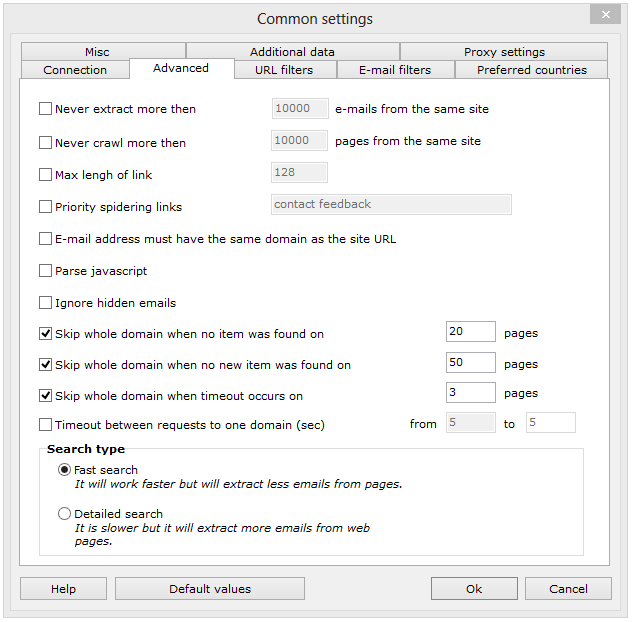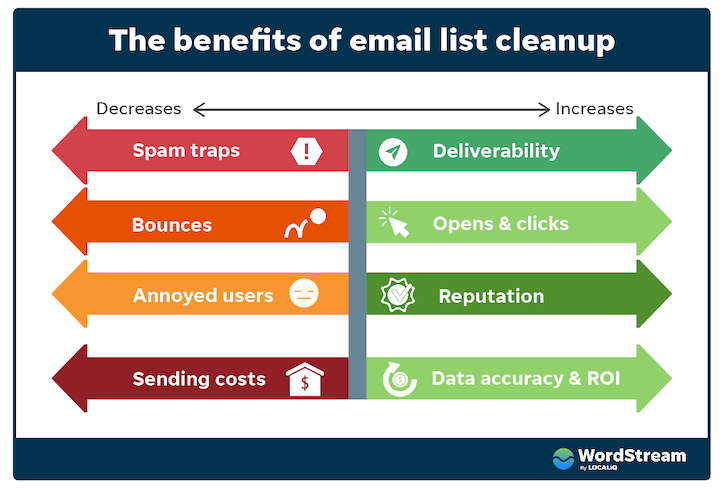In order to make sure that the email lists of pathologists you purchase are accurate legal and suitable for your goals in marketing, there are several important aspects you need to take into consideration. The following are the most crucial elements to be considered: 1. Quality of the data and accuracy
Source of Data: Verify the source of data. It could be professional directories like healthcare databases or verified opt in contacts. This will ensure that the email addresses you receive are current and relevant.
Verification Process - Check that the email lists were recently verified. Providers must have a process in place to verify email addresses and removing any inactive or invalid addresses. Good quality email lists lead to lower bounce rates and improved delivery capabilities.
Segmentation and Customization: Search for lists with options to separate by location, subspecialty (e.g. forensic pathology or clinical pathology) and experience years, hospital affiliations, etc. Customization improves your marketing reach by allowing you to target the appropriate audience.
2. Legal Regulations
Data Privacy Regulations Ensure that your email list complies all relevant data privacy laws including the General Regulations on Data Protection in Europe or the California Consumer Privacy Acts in the U.S. Pathologist data should be handled and stored in compliance with the relevant laws, while protecting the rights of individual patients.
CANSPAM Act: If your business is in the U.S., or you're trying to reach U.S. pathologists via email, make sure the list is compliant with the CANSPAM Act, which governs commercial emails. If you fail to adhere to the law, you could be fined a lot.
Consent to Opt-In: Ensure whether the emails on the list were gathered in accordance with the consent. This ensures that pathologists are able to consent to receiving promotional material, decreasing complaints about spam and preserving the reputation of your company.
3. Provider Reputation
Credibility of the provider Select a trustworthy provider that has delivered precise and complete mailing lists. To determine the quality of service, read reviews, ask for testimonials, and get in touch with other healthcare marketers.
Transparency - The provider must be transparent about the processes employed to collect data as well as how often it is updated. Beware of companies that do not disclose the source of the email list from.
Customer Service: Choose a company that provides strong customer service in case you have questions regarding the list or have problems with technology.
4. Cost and Return On Investment (ROI).
Pricing Models There are a variety of pricing models available, including pay-per-contact, flat-fee for a list, or a subscription. Determine if your marketing budget will work with the costs and determine the ROI (return on investment).
Refund Policy. Some companies will provide the option of a refund or a guarantee in case you receive a lot of unreliable emails or they do not match your expectations. Be sure that the provider has a a clear cancellation or refund policy.
Cost-effective: Compare quality, segmentation and any other additional features (e.g. integration with CRM, campaign management) and cost. The list with the lowest price may not be the most effective in the event that it is not able to deliver.
5. Data Use and Ownership
Make sure you understand your usage and licensing rights. Do you want to buy the list only one time, or do plan on using it in ongoing campaigns? Some vendors only provide one-time licenses, whereas others allow unlimited usage which is more advantageous for long-term outreach.
Shared Lists: Determine if the email list is only available to you or shared with other buyers. Shared lists: Determine whether you are the sole buyer on the email list or if it is distributed to other buyers. Exclusive lists could result in a better response because the contacts won't receive a barrage of emails from different sources.
6. Data Integration and Format
Compatibility: Check to see whether the email lists can easily integrate with your CRM or marketing email tools. The data should be provided in a format that is widely used, such as CSV or Excel. The data can then be imported easily.
Data Segmentation: Consider the ease to segment and filter the list once it is integrated. Effective segmentation could lead to personalized emails that have higher response and open rates.
7. Ethical Aspects
Relevance of your message Pathologists are highly-skilled professionals. You must ensure that the product, service or message you send is pertinent to your target audience's demands. Unrelated data may damage your reputation as a brand and result in spam complaints.
Spam Reports can result due to sending too many emails or unrequested content. Plan your campaigns carefully to keep from damaging the reputation of the sender.
Also, you can read our conclusion.
When done correctly, purchasing an email list of pathologists is a highly effective marketing tool. To maximize the potential of your outreach, you should give priority to data quality and compliance with legal requirements and reputation of providers. Be sure to ensure that your list is crafted to your particular needs. Also, be sure to adhere to data privacy laws as well as ethical practices in marketing. Take these considerations into account when creating an effective and efficient email campaign targeted at pathologists. See the most popular pathologist email list for more guide.

What Should I Consider Before Buying A Physical Therapists ' Email Lists?
If you are considering purchasing a physical therapist's email list, you must consider several important factors to consider to ensure the list is correct, legal compliant, and effective for your marketing or outreach initiatives. These are the most important considerations. Quality of data and accuracy
Data source Check the source of the data to confirm that it comes from an honest, trustworthy source, like professional associations (e.g. American Physical Therapy Association), medical directories or licensing organizations. This will ensure that email addresses are correct and reliable.
Verification procedure: Ensure that the list provider has a regular verification and updates of the data. A reliable provider will regularly cleanse the list of inactive or incorrect email addresses, which will ensure better deliverability and reducing bounce rates.
Segmentation: A high-quality physical therapist's email list should have a segmentation feature. Filters can be based on the area of the practice (city or state) or years of experience (e.g. orthopedics, pediatrics, sports therapy) as well as the what type of practice (private rehab, hospital or center). Segmentation helps you target the right audience with tailored messaging.
2. Conformity to Legal Regulations
Data Privacy Laws : Ensure your email list is compliant with relevant data privacy laws such as the General Data Protection Regulations (GDPR) for Europe, California Consumer Privacy Acts (CCPA) for the U.S. and other local laws. The information should be collected and handled legally, with the consent of all the people included.
Compliance with the CANSPAM Act Compliance with the CANSPAM Act: Marketing emails in the U.S. must adhere to the CANSPAM Act. This law requires that emails have opt-out choices and precise subject lines. They also require physical addresses. By making sure your email list conforms to the CAN-SPAM Act will lower the possibility of being penalized or face legal issues.
Opt In Consent: Make sure whether all those on the list have given their permission to receive marketing messages. This means physical therapy professionals have consented to being approached by a third party, thus reducing the chance of complaints about spam and ensuring better engagement with your email messages.
3. Provider Reputation
Reputable List Provider: Select one that has an excellent track record of producing quality and accurate email lists. Look for testimonials and case studies of previous clients. This can help you decide if the service is trustworthy.
Transparency. The company should make it clear how they collect and then update their information. If they're unable to clearly explain the methods they use to collect data in a clear manner, it could be a red flag indicating that the data might be insufficient or obtained by unreliable methods.
Customer Support: Ensure the supplier has a good level of customer support should you have problems with the list or need help with compliance or integration into the marketing tools you use. A customer service that is prompt can help avoid issues and help you save time.
4. Costs and Return on Investment (ROI).
Knowing the pricing structure of the provider is important. Some companies charge based on the number of contacts, whereas others may charge a flat fee. Check the expected ROI against the costs to determine which is the most cost-effective marketing strategy.
Refund or Replacement Policy: Find out if the provider provides a replacement or refund policy in case a substantial percentage of the email addresses are invalid or bounce. If the list does not meet the expectations of you, this can help protect your investment.
It is not advisable to select a database solely for the price. The list with the lowest price could include unreliable or inactive email addresses. This can harm your campaign. Don't just pick the cheapest option. Prioritize segmentation and quality.
5. Use and Ownership of Data
If you're unsure whether it's an one-time-use list, or if the data could be used in future campaigns. While lists for single-use are more affordable however they restrict your options for future outreach. Multi-use databases are a better choice when you plan to conduct a campaign over an extended period of time.
Exclusive or Exclusive. Shared Lists: Find out whether the list is only available to you or is sold to multiple buyers. It's likely that the shared lists are frequently used. This can lead to the exhaustion of emails, which could reduce engagement.
6. Data Integration and Format
Integration with CRM: The list of emails should be sent in an email format that is compatible with your customer relationship management system (CRM), or email platform you are using, such as CSV or Excel. This will make it simpler to integrate and manage the information.
A well-organized, easily managed list will be much easier to sort. It is important to segment and target specific physical therapy professionals according to relevant criteria. This will allow you to send specific, personalised messages.
7. Ethical Questions
Relevance of Content - Physical therapy specialists specialize in their area of expertise. Your message should be relevant and valuable. Beware of using irrelevant or generic content that could damage your reputation and decrease engagement.
Beware of Spam practices: Avoid sending too many emails to people. Inadequately sending emails can lead to spam complaints, unsubscribes and a less favorable reputation for the sender.
The final sentence of the article is:
When you purchase the list of physical therapists, pay attention to the quality of data, the provider's reputation, and legal compliance. Lists that are frequently updated and comply to privacy regulations, as well as ones that provide segmentation must be considered first. A list that's well researched and high quality can allow for more targeted advertising, better engagement, and an increased return on investment. Have a look at the recommended physical therapists email list for site guide.
